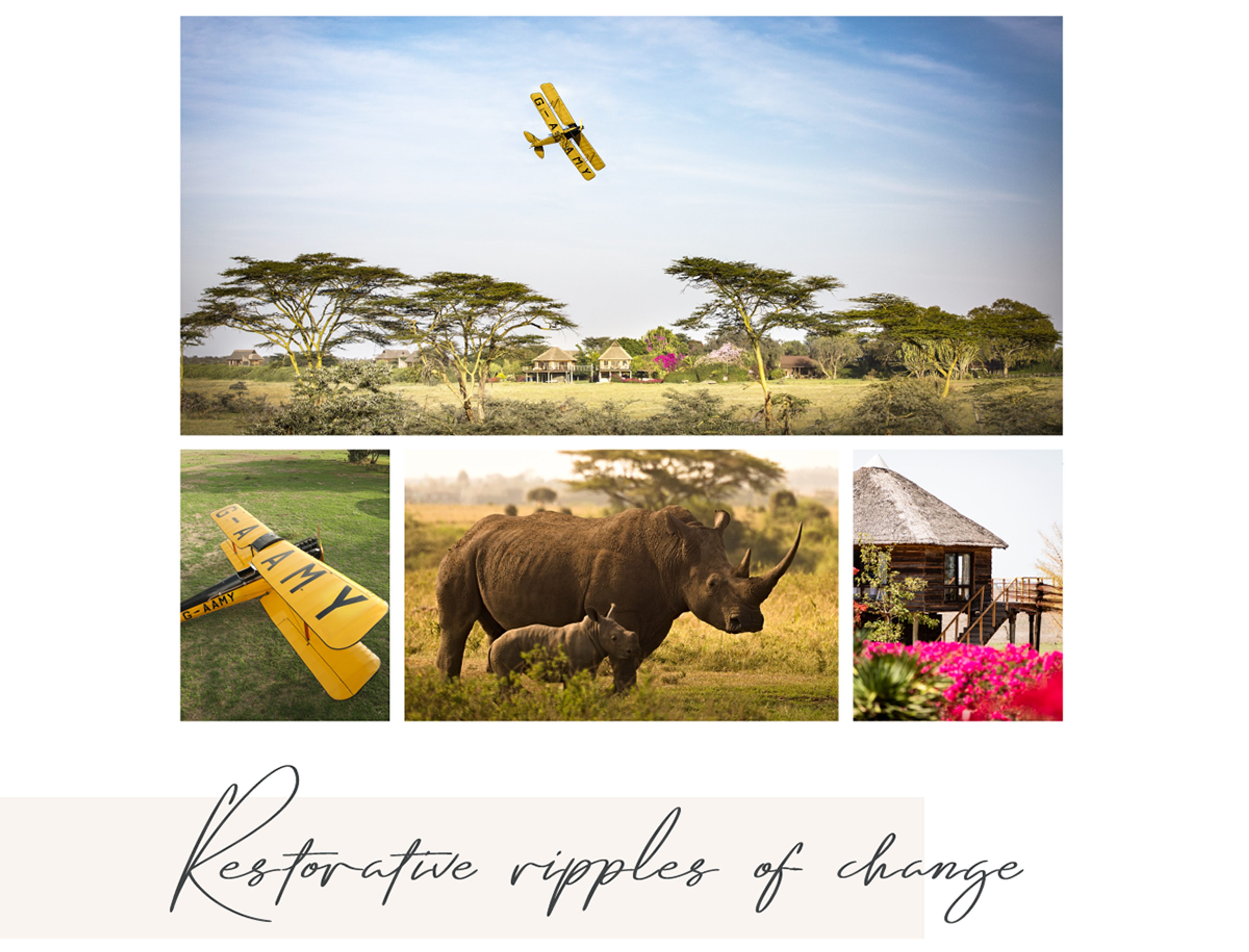The friendships formed through travel in Africa have a unique alchemy. Founded on a mutual love of exploring and protecting our planet’s last wild spaces, they have a profoundly positive ripple effect. ROAR AFRICA guest (and my dear friend) Pat Mitchell introduced me to actor Robert Redford many moons ago. Pat is, after all, the most generous connector of people known to humankind! As a little girl from a rural farm in Zimbabwe who first watched Out of Africa at eight years old – it was truly a dream come true. Years later, I made another dream come true and introduced Robert Redford to Segera’s owner and philanthropist, Jochen Zeitz. What blossomed between all of us was a deep connection founded on a love of the wild and an innate understanding of what is at stake.
To learn that Jochen’s ambitious plan for Segera’s rhino sanctuary will be partly funded by the auction of the G-AAMY biplane from that iconic Out of Africa movie scene is a deeply emotional, full-circle moment for me. The impact of storytelling always blows my mind. When I think of how much influence Redford has had on people’s dreams of Africa and how that has played such a significant role in tourism, so many lives have been impacted for the better. Jochen Zeitz is now safeguarding those dreams for the future, bringing critically endangered black rhinos back home to Segera - to the sacred foothills of Mount Kenya, where they once roamed free.








